Secrets of a successful diversification

Barn conversions, farm-shops and paintball shootouts are classic rural diversifications. We don’t, however, instinctively think of selling bras to big-busted women, motorway services, rape-oil websites, or musical extravaganzas – yet each of these is a diversification which has made a big name for itself.
They’ve created brands and added value to their product – and that’s what brand building is all about.
Compare the price difference between generic supermarket sausages and Jamie Oliver or Duchy Originals-branded bangers. Multiply that difference by thousands of units and you’ll realise how much extra value there is in a brand.
Business planning
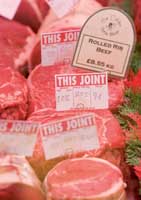 First, though, let’s go back to business basics. If you’re considering diversifying, location is the one factor that can’t be changed – your farm cannot be moved. So firstly, assess what you have.
First, though, let’s go back to business basics. If you’re considering diversifying, location is the one factor that can’t be changed – your farm cannot be moved. So firstly, assess what you have.
Perhaps you’re in one of two categories of location – convenient or destination. In the convenient location, you can sell anything if the customer wants it. Maybe you’ve been frustrated farming near a city or a main road; appalled at incessant fly tipping, trespassing ramblers and farm tracks used as lovers’ lanes? But consider turning the tables. Start a recycling operation and profit from keeping rubbish dumpers on the right side of the law. Identify trails, introduce rare species, and charge admission to a nature-experience walk. Or build a rustic wedding barn at the end of that long-abused lovers’ lane.
A destination location can use its remoteness as a way to attract visitors. “Off the beaten track” holds appeal for weekend breaks, hikers, artists, or even business retreats. Or there’s the less obvious – Old Byland Farm, for example, is a remote spot “nestling peacefully in the western edge of the North York Moors”. But farmer’s wife Sally Robinson built her Ample Bosom retail empire distributing bras from old farm sheds and she’s selling worldwide.
Think outside the box and identify skills and pastimes you enjoy. What are you and your family good at? There may be an idea there somewhere (do a SWOT analysis for each idea, comparing Strengths, Weaknesses, Opportunities, and Threats). If you’re branding a rural business venture, can the family carry on building it and will it fit their aspirations? Outsiders often see opportunities you might miss, so gather people together to discuss ideas. You’d be amazed at the creativity that could come from this. Then write a conceptual plan – and use it as a road map, not a paperweight.
Marketing
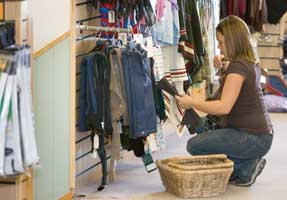 Marketing is often described in highfaluting terms, but it is really just about applying common sense to revenue generation. And since that’s an attribute most farmers naturally possess, it shouldn’t be a problem.
Marketing is often described in highfaluting terms, but it is really just about applying common sense to revenue generation. And since that’s an attribute most farmers naturally possess, it shouldn’t be a problem.
Most important is to determine what your customer wants. Don’t try to sell something just because you can make it. Carry out a focus group using your customers. What do they need/desire? Why? What will they pay? Will that price be profitable for you? What do they think of your product and brand? Know who your customers are (and don’t waste money pursuing those people who aren’t).
If locals don’t want your product, find customers elsewhere and adjust your targets, or change your plans.
Give yourself key performance indicators (KPIs) and stick to them. Setting challenging yet achievable goals, milestones and timelines for your new venture is not that different from farming.
Creating your brand
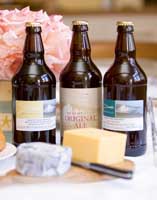 Branding is imperative for diversifications where standing out and being remembered are essential. And, as you build a brand, its strength will drive demand and allow you to command higher prices than your non-branded competitors.
Branding is imperative for diversifications where standing out and being remembered are essential. And, as you build a brand, its strength will drive demand and allow you to command higher prices than your non-branded competitors.
When building a brand, you may feel as if you are constantly spending, but as long as your investment is well directed, targeted, and backed by quality it will be sustainable.
Use the internet; you can achieve huge exposure for a fraction of the traditional marketing spend. Brand value is enhanced by the messages communicated to customers. They drive your sales, and that’s when branding starts paying back. Repeat sales cost nothing to acquire, and the branded product profit difference puts more money on your bottom-line.
Convert customers into enthusiasts for whatever you do – they’ll help your brand grow more effectively than expensive advertising campaigns. Customer care is vital to success. Keep them sweet and keen.
Some of the most successful brands started out as secrets, stunts, mistakes or oddities. Coca-Cola is founded on a recipe that supposedly only two people in the world are privy to. Jamie Oliver’s brand started off the back of publicity from his “Naked Chef” days.
Starbucks coffee achieved is first press praise when it mistakenly burned its beans hours before its first Seattle store opened. Loyd Grossman, now known for his sauces, became famous because of his annoying accent.
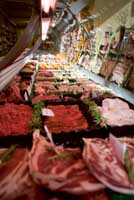 But they all capitalised on this early publicity and turned what could have been negative attributes into positives. They developed brand philosophies backed by consistent quality products, and invested in developing and evolving products within these criteria.
But they all capitalised on this early publicity and turned what could have been negative attributes into positives. They developed brand philosophies backed by consistent quality products, and invested in developing and evolving products within these criteria.
The Black Farmer brand (www.theblackfarmer.com) capitalised on racial differentiation – a classic case of spotting an opportunity and running with it. Wilfred Emmanuel-Jones was perceived as unusual in British farming, so Devonians coined a phrase to refer to him. When he realised it made him stand out, he launched The Black Farmer brand which now sells sausages, sauces, fashions and holidays at a premium.
Ask yourself what message you could convey with a brand? Who you want to reach (your target customer)? What should it say about you? Your product? Hone this information. Then develop a tight brand philosophy and stick to it, making sure you can deliver against your objectives.
Keep your branding and message simple. “Every little helps.” “Taste the difference.” Recognise the retailers?
You’re creating a legacy you can pass on or sell, so look after your intellectual property. Trademark your brand. It’s a small expense against the long-term credibility and protection it affords.
Another example is the Froggatt family (fourth generation at Wade Lane Farm in Staffordshire), who grow rape. They bottled and sold rape oil locally before launching a website. Now they sell mayonnaise, stir fry oils, crisps, dressings and other culinary products – but the foundation of the business remains home-grown oil. Just Oil is a great small brand and the name of the business says everything about focus.
Stick to what you know and get professional help when you’re out of your depth. It may seem expensive to use a design firm, a website creator, or a marketing consultant, but it’s cheaper than the cost of correcting mistakes, or trying to make home-made efforts look professional.
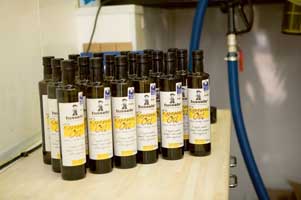 Add choices – either new products you can make, or compatible outsourced ones. Or open a new location – but be sure the second location is as good as the first. The worst thing you could hear when you’ve expanded a branded operation is a customer saying “it’s just not the same as the original”.
Add choices – either new products you can make, or compatible outsourced ones. Or open a new location – but be sure the second location is as good as the first. The worst thing you could hear when you’ve expanded a branded operation is a customer saying “it’s just not the same as the original”.
Finally, whatever your diversification, all customers will have similar buying motivations. They must want your product, or enjoy your facility. Accommodation should be more attractive than what they’ve got at home. Leisure activity must be more fun. And products must be better than they can make themselves. Appeal to customers’ sentiments and desires, and they’ll beat a path to your door.
Diversification by necessity
Tebay Motorway Services near Rheged in Cumbria is a success story. When the M6 developer cut the motorway right through the middle of John and Barbara Dunning’s farm, they kept some land on either side of the road, and partnered with a local baker to develop roadside cafés. Today Westmorland is the only locally owned services in the country, celebrated for its award-winning butchery, farm shop, hotel and restaurants; and they’re starting work on another one in Gloucestershire on the M5.
Remote, but popular
Starting with his father’s barn full of steam engines (and a reclaimed Blackpool Tower organ – part of an auction lot) John Cushing created the Thursford Collection, the world’s largest steam engine museum, an acclaimed musical extravaganza (even Wills and Kate visited the Thursford Spectacular last Christmas – their highly publicised first post-engagement engagement), and a collection of upmarket boutiques: A remote farmyard conversion in Norfolk that now draws several hundred thousand paying visitors annually.
Talking shop
Trading on its stately home credentials, Chatsworth farm shop in Derbyshire is a perfect example of branding. But with nuts from Brazil, Italian extra virgin olive oils, North Sea fish, luxury French fruit juices, and hundreds more gourmet products sold under the Chatsworth label at premium prices, it’s more testament to branding excellence than the traditional farm shop. The lesson, though, is that once your brand is recognised, you can outsource compatible products to complement your own, merchandising them profitably under your brand rather than diluting your image.
Building farm brands
• What should your brand say about your product/service?
• Brand consistency vital in every aspect
• Be prepared to invest steadily over the long term
